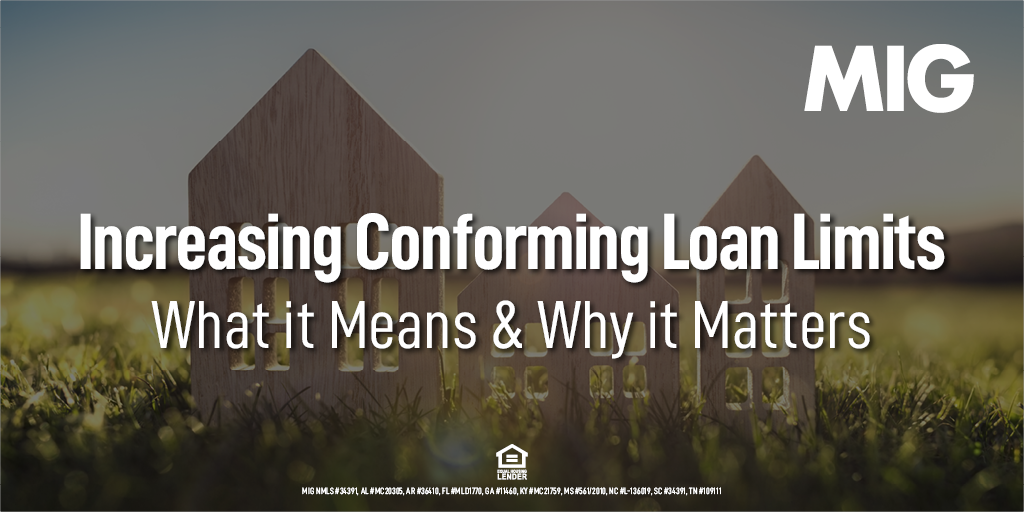Increasing Conforming Loan Limits: What It Means and Why It Matters

Posted by : Admin
In 2021, the conforming loan limit will be increased for the fifth consecutive year by the Federal Housing Finance Agency. The move, which increases the limit by 7.5% from $510,400 to $548,250, follows a trend that began in 2016; previously, the agency hadn’t increased the limit in 10 years.
In what has been an unusual year in most every way, what few could predict was the increased demand in the housing market. So, how will this increase affect this trend? Let’s take a look at what it means, and why the increase in conforming loan limits matters.
What does the increase in conforming loan limits mean?
The Housing and Economic Recovery Act of 2008 determines the conforming loan limits for Fannie Mae and Freddie Mac, which handle most of the market. The limits established that, after a period of price declines, the baseline loan limit cannot rise again until home prices return to pre-decline levels.
There are two different types of conforming loan size limits: standard area and high-cost area. For standard areas, the new limit of $548,250 is a significant increase from the original limit of $417,000 set in 2008. For most high-cost areas, the maximum loan limit for a one-unit property has been around $765,600 for 2020. These loan limits will also be increasing for high-cost areas, where 115% of the local median home value exceeds the baseline loan limit, from $765,600 to $822,375.
Are there benefits to conforming loans? Yes, typically conforming loans have lower interest rates than nonconforming loans because they are easily bought and sold on the secondary mortgage market. They tend to be a less risky investment for lenders. Loans exceeding the limit, or “Jumbo Loans” are considered to be nonconforming loans because they exceed the county’s general or high-loan limit.
Why does the conforming loan limit increase matter?
Since conforming loans must follow guidelines set by Fannie Mae and Freddie Mac, they are seen in the lending industry as lower risk, which allows the borrower to lock in lower rates. This increase provides a larger window of opportunity for borrowers to meet these standards and qualify for conforming loans that would otherwise fall into the “jumbo loan” bracket.
How does the conforming loan limit affect my area?
The conforming loan limit is set on a county-by-county basis. The Federal Housing Finance Agency has created a map that works as a helpful resource in determining the limits in your area. View the map.



